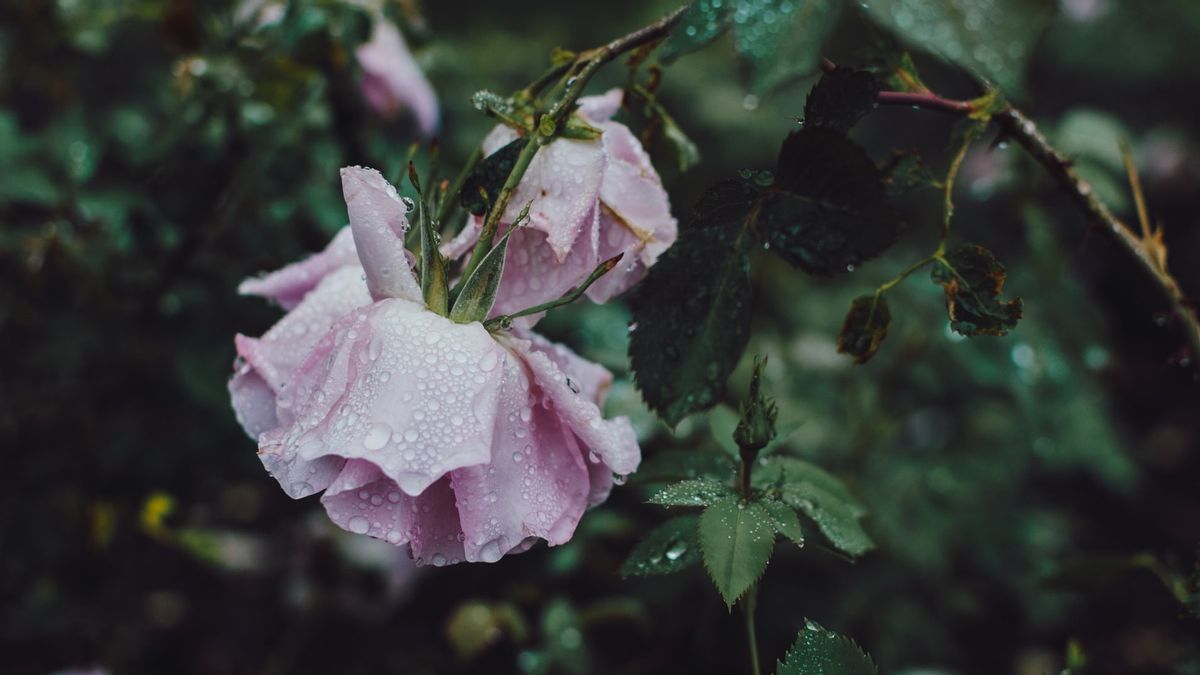JAKARTA – The start of the rainy season is the right time to start sowing new plants. But what if it rains every day and the air is getting more humid?
For those of you who like to take care of plants, of course you have started looking for ways to protect your collection of plants at home from rain. Excessive rain does cause problems for ornamental plants. Quoting from Gardening Know How, Wednesday, November 3, too wet weather causes disease through plants.
Moist roots and leaves make it easier for a variety of pathogenic bacteria and fungi to spread, causing plant diseases. According to Amy Grant, excessive rain causes the following diseases in plants:
Slow growing Spots appear on leaves Decay on leaves, stems or fruit Wilted plants Interfere with pollination and fertilizationSymptoms of the disease above, can be overcome. However, it is necessary to monitor and identify the cause of each symptom. What triggers the symptoms of disease in the plants above? Here's the list.
1. AnthracnoseAnthracnose is a fungus that spreads on deciduous and fertile trees during the rainy season. This fungus attacks the trunk and spreads to the top of the tree.
Anthracnose is also known as leaf blight. Symptoms, dark color lesions appear on plants, especially on leaves, stems, flowers, and fruit. This disease can be recognized when you find fallen young leaves.
The way to deal with this disease, give a fungicide spray. You can also trim some leaves to increase airflow and remove infected plant parts.
2. Powdery mildewPowdery mildew is a fungus that often appears during heavy rainfall. If the plant is attacked by this disease, it looks like white powdery growth on young and old leaves. Getting enough sun exposure can actually kill powdery mildew. It can also be sprayed with synthetic fungicides or a mixture of neem oil, bicarbonate of sulfur, and organic fungicides.
3. Apple scabApple scab also includes mushrooms. This causes the leaves to curl, turn black, or develop black spots that attack the rose leaves in the rainy season.
4. blight of fireIn contrast to the causes of plant diseases previously classified as fungi. Fire blight is a bacterial disease that attacks fruit trees such as pears and apples.
5. Iron chlorosisIron chlorosis is an environmental disease that prevents roots from absorbing enough iron. Of course this causes stunted plant growth.
Prevention, writes Grant, is the best way of defense. What needs to be done to prevent your favorite plants from being attacked by the above diseases, among others, in the following ways:
Remove diseased plant parts. The proper way to dispose of it so as not to infect other plants, is to burn it or throw it away. Choose cultivars that thrive in wet environments and are disease resistant. Place it in a higher area to avoid root rot. Avoid pruning plants in wet conditions. Wait for the leaves to dry, then separate the infected. Improve soil drainage by making beds or making mounds so that the soil is higher and water can drain. Spray a fungicide before the plant develops disease.You can also use paranets to protect outdoor plants from heavy rain.
The English, Chinese, Japanese, Arabic, and French versions are automatically generated by the AI. So there may still be inaccuracies in translating, please always see Indonesian as our main language. (system supported by DigitalSiber.id)









